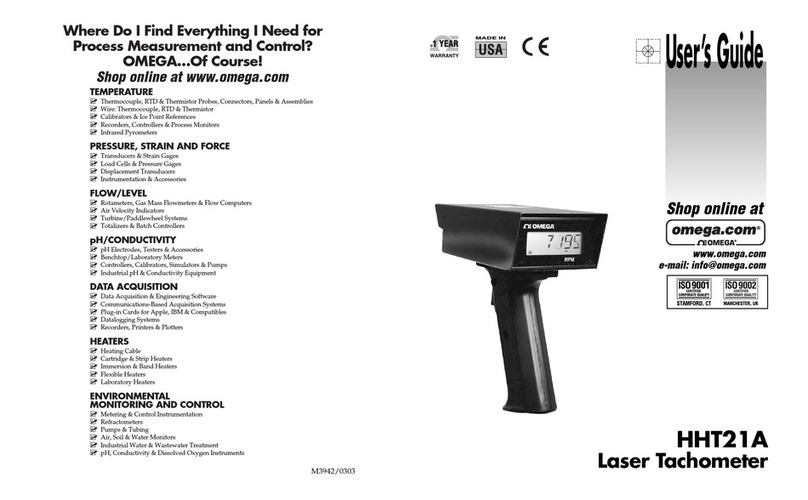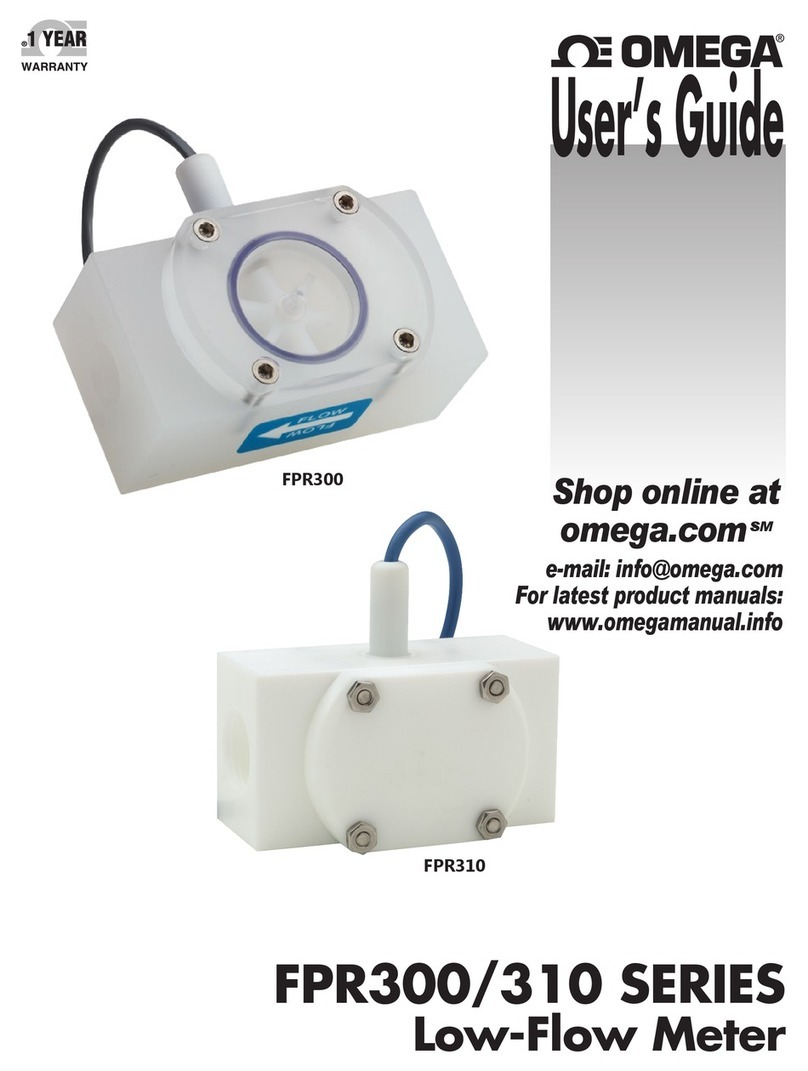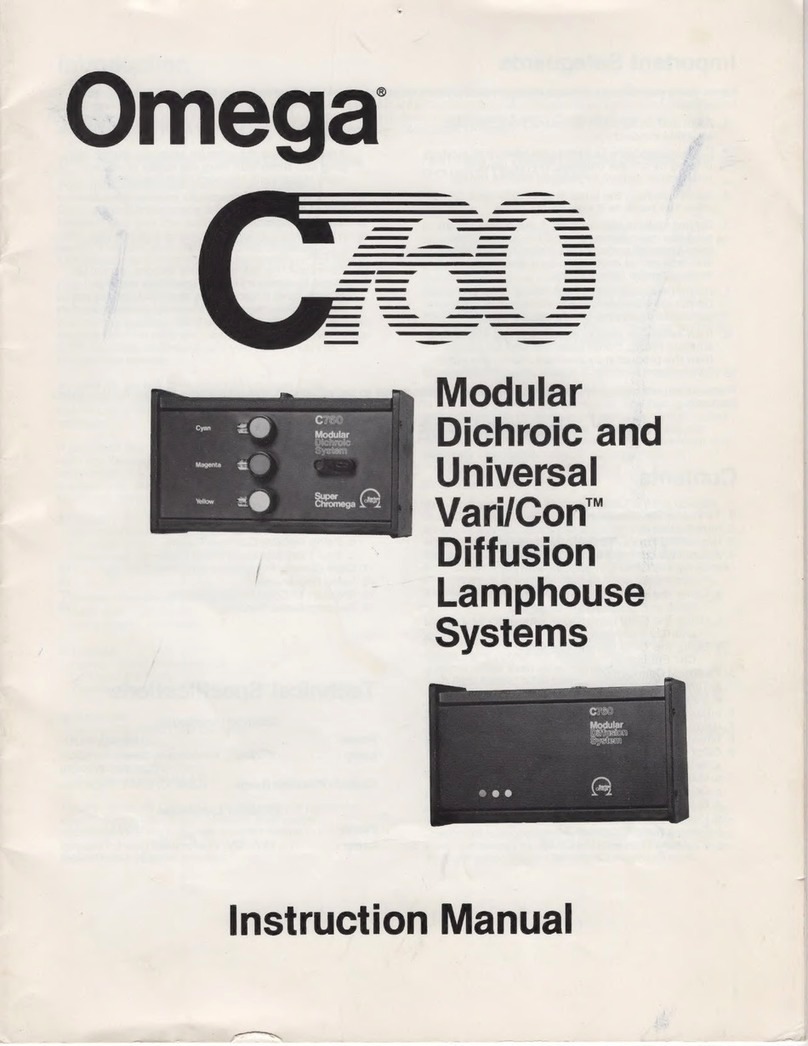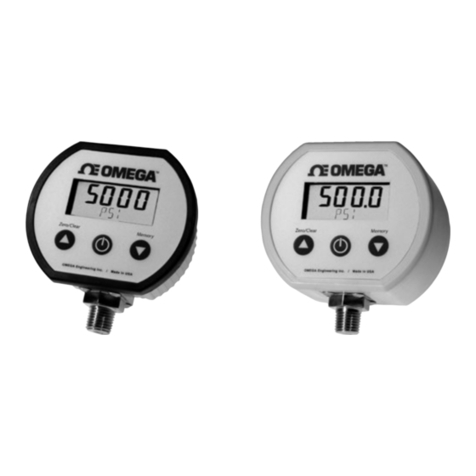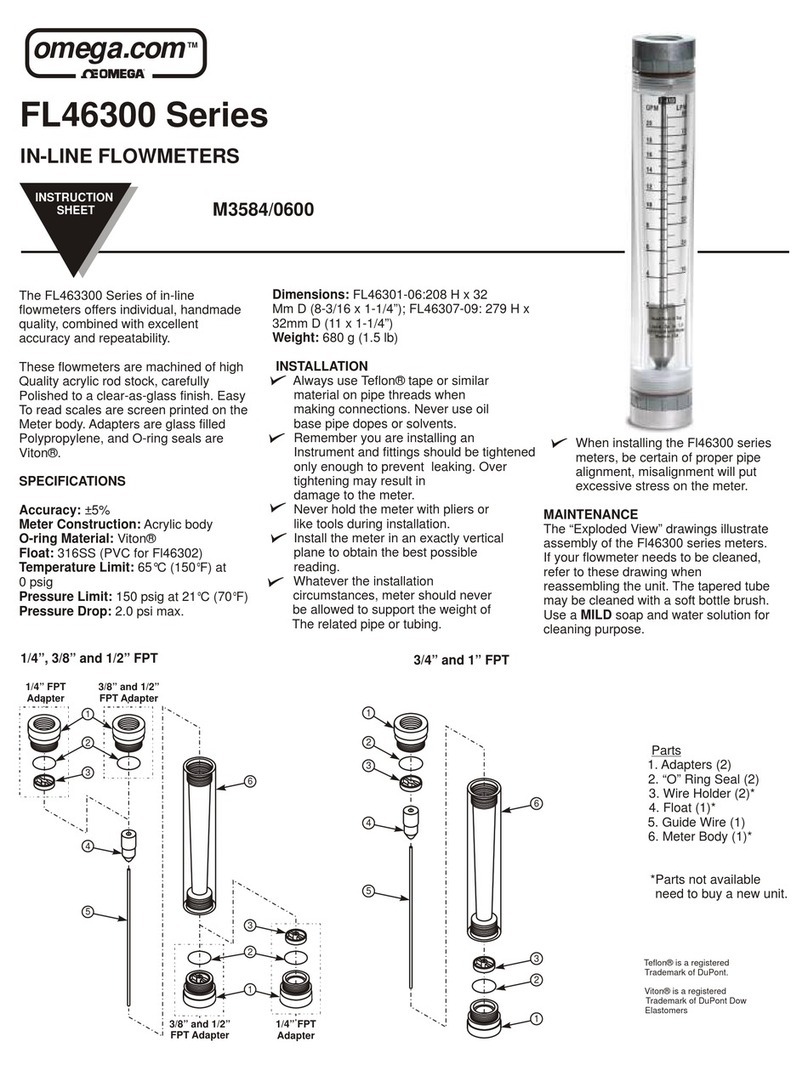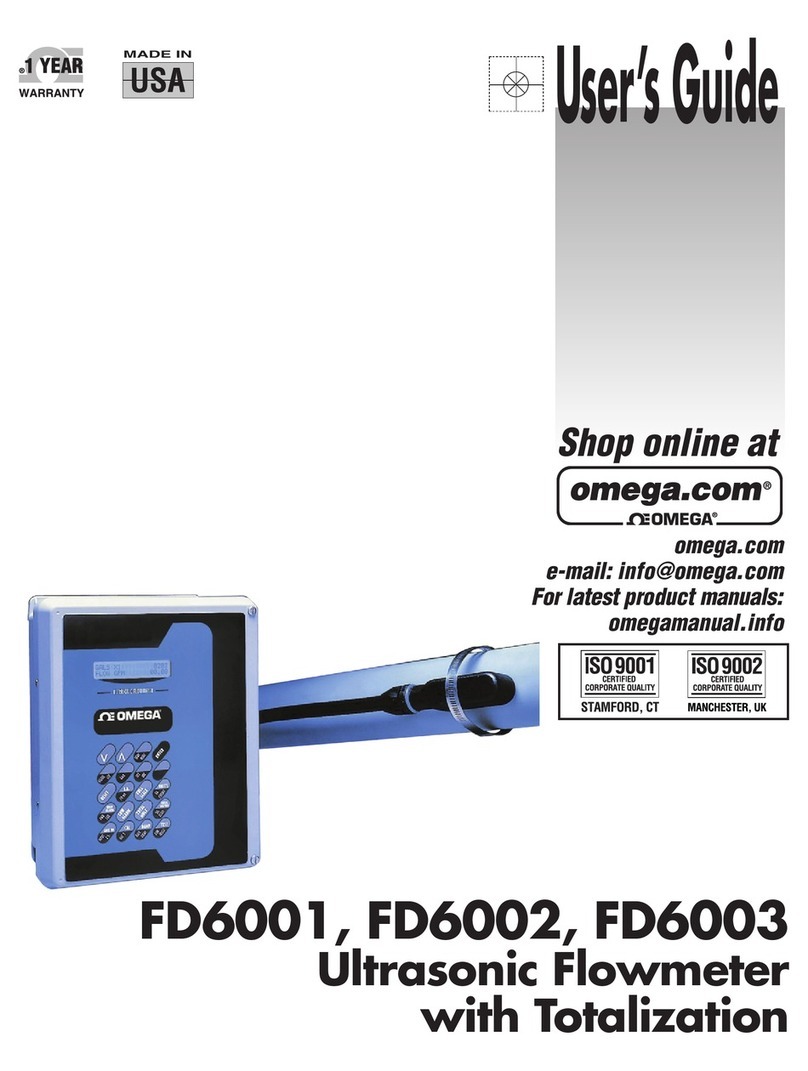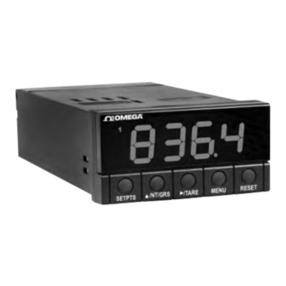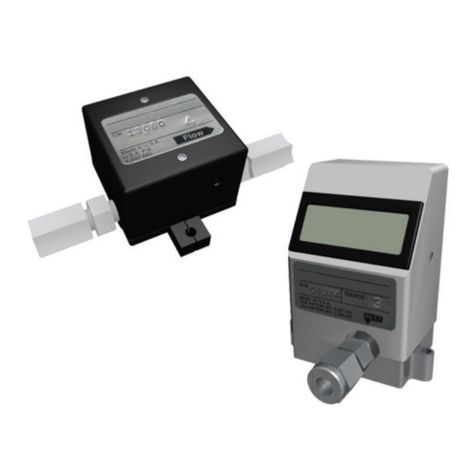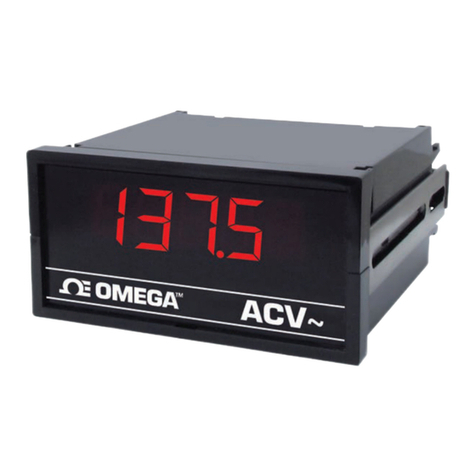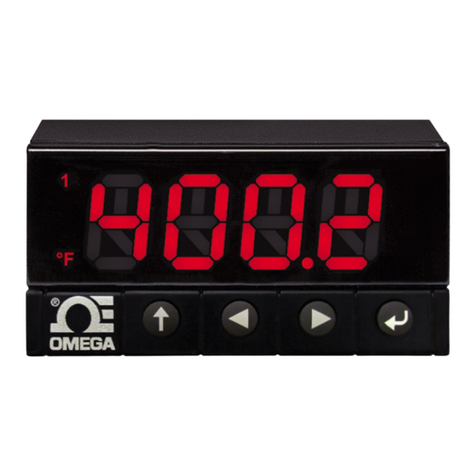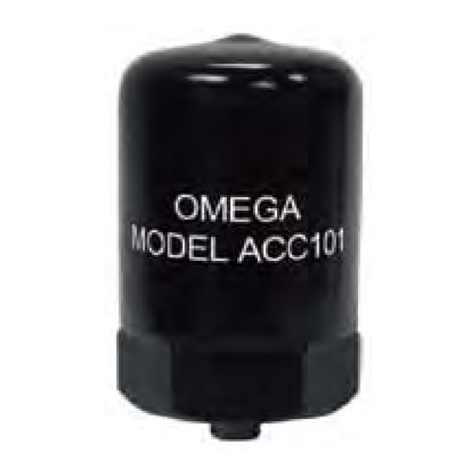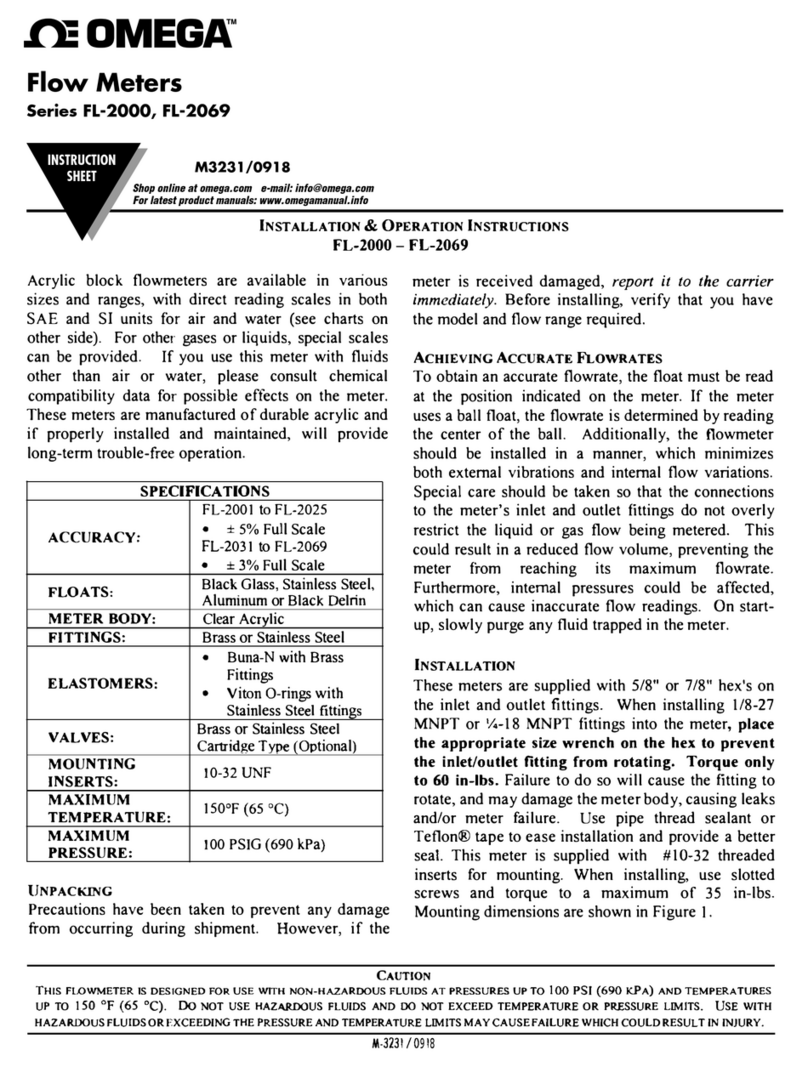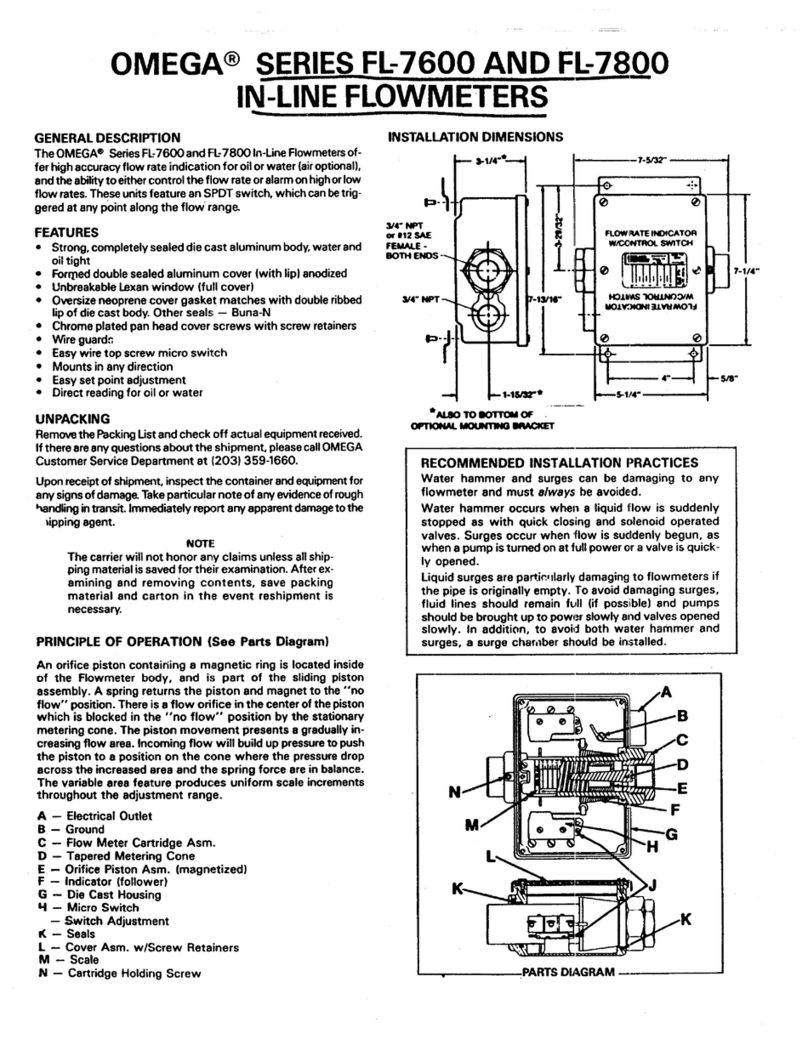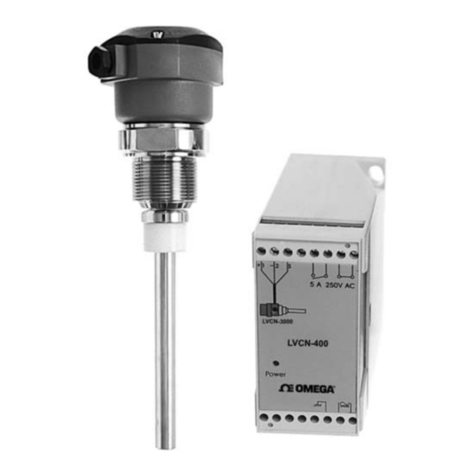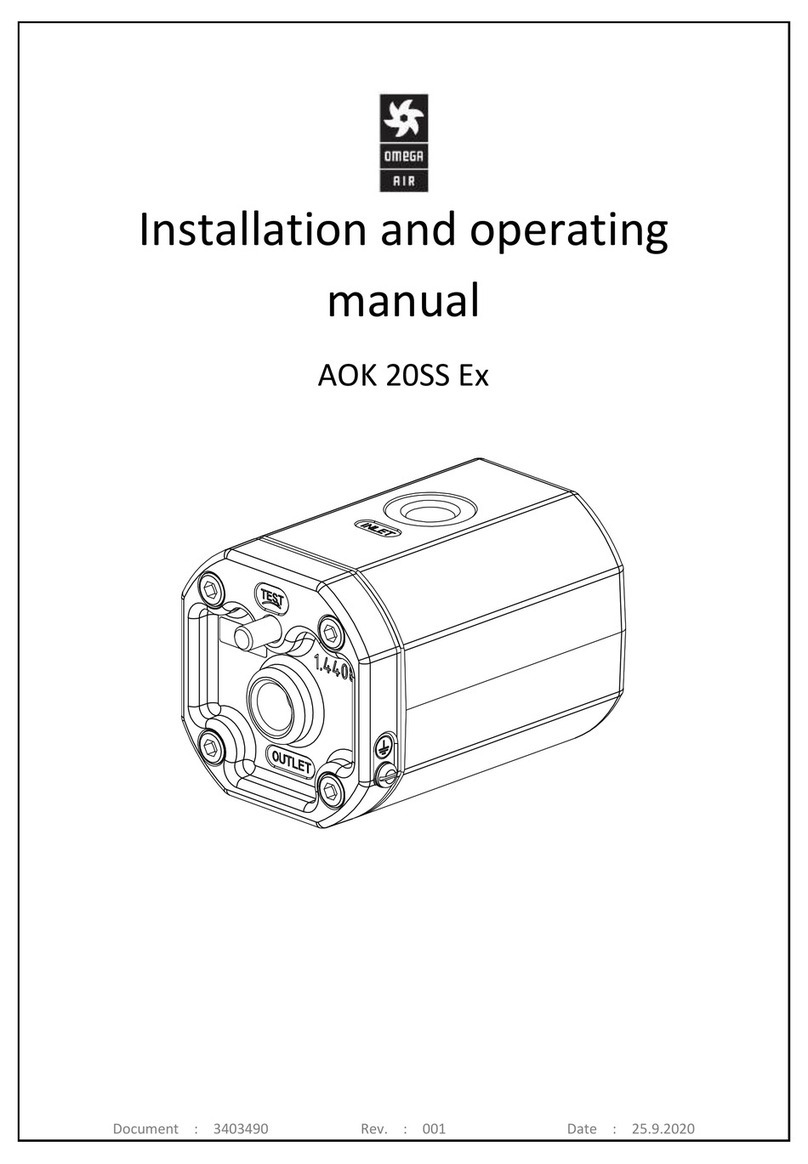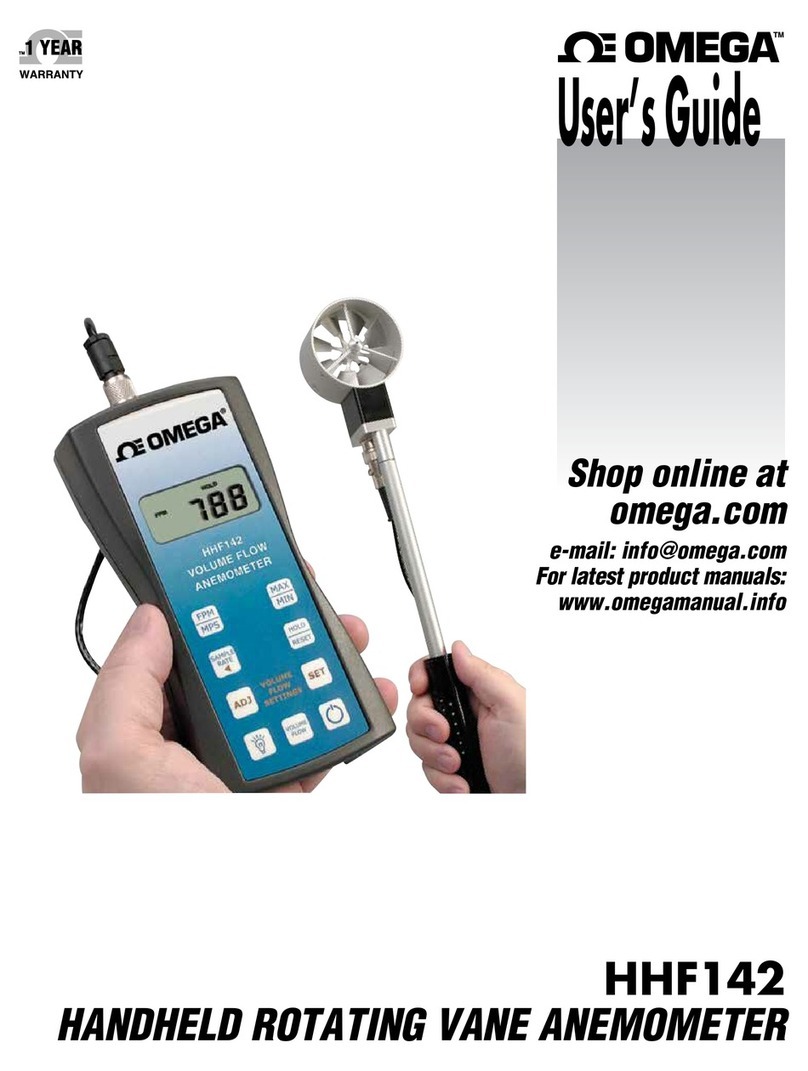
If for any reason the display electronics
need to be mounted on your turbine, simply
mount the display on the turbine with the four
screws at the corners of the faceplate. Make
sure the seal is fully seated before tightening
the screws.
If you ordered the FTB380 Series turbine with
an accessory module, please review and thor-
oughly understand all installation instructions
before proceeding.
Avoid electronically “noisy” environments.
Install at least 6 inches (15.2 cm) away from
motors, relays, or transformers.
4
OPERATION
All operations are reected in the LCD read-
out. The large center digits indicate amounts,
where smaller words or “icons” located above
and below indicate specific information
regarding totals, ow, calibration and units
of measure.
Activate the Meter
The computer is on continuously and always
ready to perform. The computer is powered
by eld replaceable batteries. When display
becomes dim, faded or the low battery mes-
sage appears (see below), the batteries need
to be replaced. Reference the Maintenance
Section for details.
Batch and Cumulative Totals
The computer maintains two totals.The Cumu-
lative Total provides continuous measurement
and cannot be manually reset. The Batch Total
can be reset to measure ow during a single
use. The Cumulative Total is labeled TOTAL
1, Batch Total is labeled TOTAL 2 BATCH.
When the Cumulative Total reaches a display
reading of 999,999 the computer will highlight
an X10 icon. This indicates to the operator that
a zero must be added to the 6 digits shown.
When the next rollover occurs, the computer
will highlight an X100 icon. This indicates to
the operator that two zeroes must be added to
the 6 digits shown.
Press the DISPLAY button briey to switch
between the TOTAL 1, TOTAL 2 BATCH
and FLOWRATE. Press DISPLAY briey
to display the TOTAL 2 BATCH. Hold the
DISPLAY button for 3 seconds to reset the
Batch Total to zero.
When uid is owing through the meter, a
small propeller icon is highlighted.
Flowrate Feature
To use this feature, press and release DIS-
PLAY button until FLOWRATE icon appears.
The factory set time base will be highlighted
to the right of FLOWRATE (M = Minutes,
H = hours, D = days). When FLOWRATE is
invoked, the display will be indicating rate
of ow.
Factory and Field Calibration
All calibration information is visible to the
user as icons on the top line of the display,
above the numeric digits.
All units are congured with a “factory”
calibration. Both gallons and litres are avail-
able (“GL” or “LT” will be displayed). While
holding the CALIBRATE button, briey press
DISPLAY to toggle between gallons and litres.
This factory calibration (indicated with FAC)
is permanently programmed into the computer
and is not user adjustable.
NOTE: Your computer may have other units of
measure programmed into it. If so, holding
the CALIBRATE button and momentarily
pressing the DISPLAY button will toggle
through all factory set units. Other pos-
sible units are: IGL (imperial gallon), QT
(quart), CF (cubic feet), CM (cubic meter),
BL (42 gal. barrel), CC (cubic centimeter)
or OZ (ounce).
Switching between different units will not
corrupt the Total’s contents. For example, in
GL mode, the computer totalizes 10.00 gallons,
if the user switches to LT mode, the display
will read 37.85 litres (the same volume, dif-
ferent unit).

